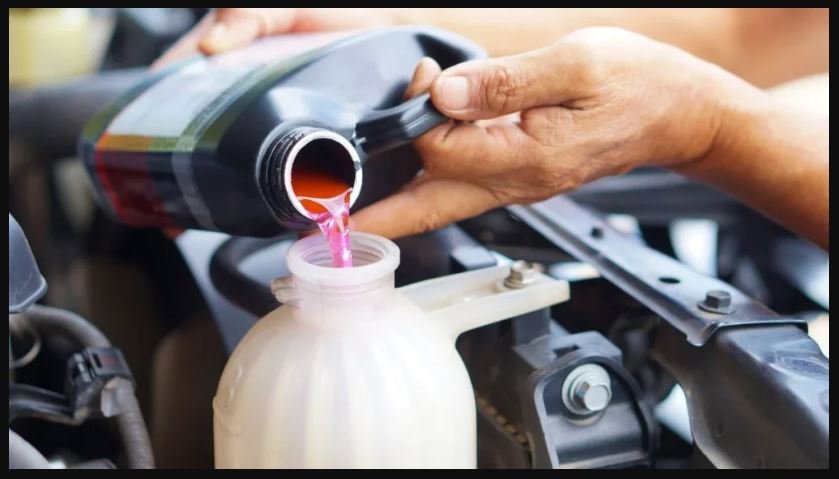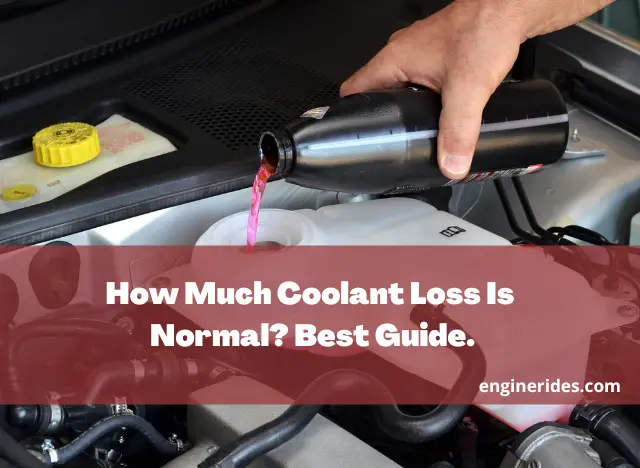How Much Coolant Loss Is Normal? Best Guide
It is very normal to lose some coolant over time because of the heat of the engine, as well as invisible leaks and some other reasons. But if the coolant is losing more than normal, then it is something that you should take a look at ASAP.
But how much coolant loss is normal? What to do if coolant loss is higher than normal? When to replace coolant regularly? In this article, we’ll take a look at all these questions that people keep asking, and many more related to coolant loss in your vehicle.
So I invite you to read the content to the bottom because you’ll find out everything you need to know about those situations in this guide. Let’s begin, and warmly welcome to EngineRides.
Why there is a natural Coolant Loss in vehicles with time?
Yes, it is natural for vehicles to experience coolant loss over time. Coolant, also known as antifreeze, is a crucial component of a vehicle’s cooling system. It circulates through the engine to help regulate its temperature and prevent it from overheating. However, various factors can lead to coolant loss in a vehicle:
- Evaporation
Coolant can gradually evaporate over time, especially in hot climates or if the vehicle is exposed to high temperatures. This evaporation can cause the coolant level to decrease.
- Leaks
Coolant leaks can occur in various parts of the cooling system, such as hoses, gaskets, radiator, water pump, and heater core. Leaks can develop due to wear and tear, corrosion, or damage, leading to a loss of coolant.
- Boil-Over
In extreme conditions, if the engine temperature gets too high, the coolant can boil over, causing a loss of coolant. This typically happens when the cooling system is unable to handle the excess heat.
Why Does The Engine Temperature Spikes Then Returns Normal? A Must Read Guide
enginerides
- Maintenance Issues
Neglecting regular maintenance, such as coolant flushes and replacing worn-out components, can result in a gradual loss of coolant effectiveness, which may lead to more significant losses over time.
- External Factors
Environmental factors, like road debris or contaminants in the coolant, can contribute to coolant loss.
Top up the coolant as needed with the manufacturer-recommended coolant type and mix, and promptly address any leaks or maintenance issues to ensure the vehicle’s cooling system operates efficiently. Ignoring coolant loss can lead to engine overheating and potentially cause severe damage.
How Much Coolant Loss Is Normal?
Losing a small amount of coolant, like 2-3 ounces, in a whole year is usually okay. It can happen because of things like the liquid slowly evaporating or tiny leaks.
But if you notice a bigger loss over a short time, it might mean there’s a bigger problem, like a significant leak or something wrong with your vehicle’s cooling system.
In that case, it’s important to look into the issue and fix any leaks or problems as soon as possible to avoid your engine getting too hot and damaged.
How do you fix coolant loss in your vehicle?
Fixing coolant loss in your vehicle involves identifying and addressing the underlying cause. Here are steps to help you resolve the issue:
01. Locate the Leak
Inspect your vehicle for signs of coolant leaks. Look under the car for puddles or spots of coolant, and check the engine bay for wet areas or visible leaks. You can also use a cooling system pressure tester to help identify the source of the leak.
02. Tighten Hose Clamps
If the leak is coming from a hose connection, check the hose clamps and ensure they are tight. Sometimes, a loose hose clamp can be the cause of a coolant leak.
Replace Damaged Hoses: If you find a cracked, swollen, or damaged hose, replace it. Hoses can deteriorate over time and cause leaks.

03. Inspect Gaskets and Seals
Check gaskets and seals in the cooling system, such as the water pump gasket or thermostat housing gasket. If they are worn or damaged, they should be replaced.
04. Check the Radiator
Examine the radiator for visible damage or corrosion. Leaks can develop in the radiator, and if it’s damaged, consider replacing it.
Accidentally Put Oil In Coolant Reservoir? Here Is What To Do?
enginerides
05. Pressure Test
If you can’t easily locate the source of the leak, use a cooling system pressure tester to pressurize the system and pinpoint the leak.
06. Repair or Replace the Heater Core
If you suspect a heater core leak, this may require more extensive repair, potentially involving the removal of the dashboard. Consider professional assistance for this task.
Inspect the Water Pump: The water pump can develop leaks over time. If it’s the source of the issue, consider replacing it.
07. Check for Head Gasket Issues
If you suspect a more serious issue, such as a blown head gasket, look for symptoms like white smoke from the exhaust or coolant mixing with oil. This may require professional diagnosis and repair.
08. Refill Coolant
After fixing the leak, top off the coolant with the appropriate type and mixture recommended by your vehicle’s manufacturer.

09. Regular Maintenance
To prevent future coolant loss, follow the manufacturer’s recommended maintenance schedule for cooling system flushes and inspections.
If you’re not comfortable diagnosing or repairing coolant leaks yourself, it’s a good idea to consult a qualified mechanic or technician to ensure the issue is properly resolved and to avoid potential damage to your engine from coolant loss.
How is coolant loss associated with different scenarios?
Now we’ve learned what you’ve wanted to see, and I thought to discuss some common scenarios linked with coolant leaks that vehicle owners usually face.
Why lose coolant?, no leak no overheating?
Coolant loss without visible leaks or overheating can be due to several factors. Gradual evaporation is common, especially in hot climates. Minor seepage at gaskets or hose connections might not be easily noticeable. Additionally, some vehicles have overflow systems designed to release excess coolant, which can lead to a gradual loss over time.
A small drop in coolant level over an extended period may not necessarily indicate a problem, but it’s important to monitor it. If the loss becomes significant or rapid, it may require further investigation, as it could signal an underlying issue that’s not yet causing overheating or visible leaks.
How much coolant loss is normal in summer?
In summer, a minor coolant loss due to evaporation is normal. It’s common for coolant levels to decrease slightly as the weather gets warmer, especially in hot climates. Generally, a small loss of coolant, up to a few ounces or millilitres over the entire summer season, is considered within the normal range.
This loss is primarily attributed to the higher temperatures causing some of the coolant to evaporate. However, if you notice a more significant or rapid decrease in coolant levels, it’s essential to investigate for possible leaks or other issues in the cooling system.
Does the coolant level drop when the engine is hot?
Yes, coolant levels can drop slightly when the engine is hot. This is due to the expansion of the coolant as it heats up. The hot coolant expands and may overflow into the vehicle’s overflow or expansion tank, causing a temporary drop in the radiator’s coolant level.
Once the engine cools down, the coolant contracts and is drawn back into the radiator from the overflow tank, restoring the normal coolant level.
How much coolant should be in the reservoir?
The coolant level in the reservoir or overflow tank should typically be maintained at the “Full” or “Max” mark when the engine is cold. This provides a buffer for coolant expansion when the engine gets hot. Always refer to your vehicle’s owner’s manual for the specific coolant level recommendations.
Conclusion
In summary, coolant loss in vehicles can be a common occurrence, primarily due to factors such as evaporation, minor seepage, or temperature-related expansion and contraction. A small, gradual coolant loss, on the order of a few ounces over an extended period, is generally considered normal, especially in hot weather.
Regular monitoring of the coolant level is essential to detect any abnormal or rapid changes. If you notice a significant loss or suspect a coolant leak, it’s crucial to investigate and address the issue promptly to prevent potential overheating and engine damage. Following manufacturer-recommended maintenance practices can help ensure the cooling system operates effectively, promoting the longevity and reliability of your vehicle.








One Comment